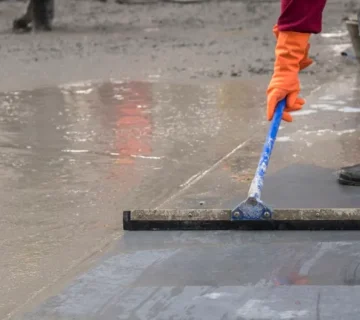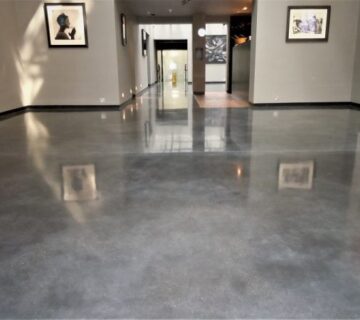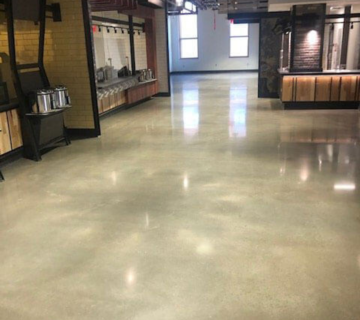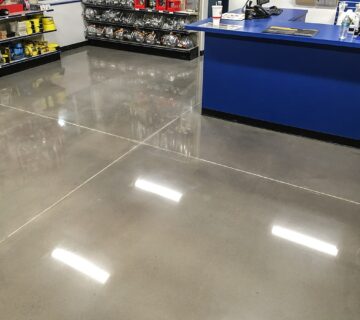Concrete polishing has become one of the most popular flooring choices in modern architecture. From shopping malls and airports to homes and offices, polished concrete is everywhere. But what many people do not realize is that the real secret behind that mirror-like shine and long-lasting strength is a product called concrete densifier. Without it, polished floors would never achieve the durability, gloss, and resistance that make them stand out.
In this blog, we will dive deep into the world of concrete densifiers, ranking the most important aspects that make them essential. We will also look at the best types, benefits, and tips for choosing the right one in 2025. By the end, you will know exactly why a densifier is the backbone of polished floors.
Why Concrete Densifier Matters the Most?
When concrete is poured, it contains natural pores that make it weak against dusting, water penetration, and wear. Over time, untreated concrete will chip, crack, or lose its surface strength. This is where densifiers come in. They penetrate the surface and react with the free lime in the concrete to form a chemical bond. This process makes the surface denser, stronger, and capable of holding a higher polish.
Think of densifiers as a vitamin supplement for your concrete. Just as your body becomes healthier with the right nutrients, your floor becomes stronger and longer-lasting with densifiers.
The Top Benefits of Using a Densifier
Ranking the advantages of concrete densifiers helps us understand why they are an absolute must for polished floors.
- The most important benefit is an extended lifespan. Floors last decades longer with densifiers because the surface is reinforced.
- Densifiers eliminate dusting, which means no more fine concrete dust floating in the air. They provide stain resistance, as liquids have less chance of seeping in.
- They increase gloss potential, helping create showroom-like finishes.
- Fifth, they reduce maintenance, because polished floors with densifiers only need cleaning instead of waxing or coatings. Sixth, they are eco-friendly since they use existing concrete instead of replacement. Among all of these, durability remains the top-ranked benefit because it is the foundation of every polished floor project.
Types of Concrete Densifiers Ranked by Effectiveness
Not all densifiers are the same. The chemical composition makes a huge difference in performance. Lithium silicate densifiers are ranked first because they penetrate deeply, react quickly, and leave less residue.
They are perfect for high-traffic spaces. Sodium silicate densifiers are affordable and widely available, but they may require more coats and careful cleaning. Potassium silicate densifiers perform strongly in industrial settings but are less common for homes.
Colloidal silica densifiers are gaining popularity due to their nano-sized particles that penetrate extremely well, and are often used in advanced polishing systems. Lithium stays on top for long-term performance, but colloidal silica is quickly climbing the ranks thanks to nanotechnology.
Best Practices for Applying a Densifier
Applying a densifier is not just about spraying and walking away. The method decides the outcome. The best practice is to apply it at the right stage of polishing, usually after the initial grinding step, when the surface is open enough for penetration.
The second most important step is to distribute evenly using a sprayer or microfiber mop so no spot is missed. Third is allowing proper dwell time, because the densifier needs time to soak and chemically react. Fourth, avoid over-application since too much product leaves a residue that requires more grinding. Finally, always test small areas first since every slab of concrete has different characteristics.
Innovations in Concrete Densifiers in 2025
The construction industry never stands still, and densifiers have evolved as well. Nano-enhanced densifiers now use nanoparticles for deeper penetration and faster bonding. Low-VOC formulas are available for eco-friendly projects and align with green building certifications.
Multi-function densifiers that act as a densifier and sealer in one are becoming popular to save both time and cost. A few companies are also experimenting with smart monitoring systems that can measure surface density after application. These innovations show how densifiers are no longer simple chemicals but advanced solutions designed to meet modern flooring demands.
Best Environments for Using Densifiers
Where exactly should densifiers be used? They are useful in almost every polished concrete project, but the demand varies. Warehouses and industrial plants rank first because heavy machinery and foot traffic make durability essential.
Retail stores and shopping malls come second since shiny, clean floors attract customers and reduce cleaning costs. Airports and stations are next because they see thousands of daily users and require long-lasting shine. Educational institutions are also high on the list since schools and universities prefer low-maintenance flooring. Finally, residential spaces are catching up, with polished kitchens and living rooms becoming part of modern home design.
Cost Factor Ranked by Value
Many people assume densifiers are expensive, but in reality, they are cost-effective. The cost depends on the type of densifier and the project size. Sodium silicate is usually the cheapest, while lithium silicate is more expensive but offers the best long-term value.
When ranked by value, lithium comes first for unmatched lifespan. Sodium comes second for budget-friendly use. Colloidal silica falls in the mid-range but offers advanced performance. Potassium silicate is ranked last as its value is mostly limited to heavy industries. For long-term return on investment, lithium remains the clear winner.
Mistakes to Avoid When Using a Densifier
Even the best product can fail if applied incorrectly. The most common mistake is applying it too late in the polishing process when the surface is already too dense to absorb. Another mistake is using too much product, which causes residues.
A third is ignoring the curing time and rushing to the next polishing step. Finally, choosing the wrong type of densifier for a project often leads to wasted time and money. Among these, rushing the curing process is the biggest mistake because it ruins the chemical reaction that makes the floor stronger.
Future of Concrete Densifiers
Looking ahead, densifiers will become smarter and greener. Bio-based chemicals may soon replace traditional silicates. Nanotechnology will continue to improve penetration and performance, making floors even stronger and more resistant to stains.
With building certifications becoming stricter, products with zero harmful emissions will dominate the market. This means densifiers will not only improve performance but also play a role in sustainable construction.
Final Thoughts
Concrete densifiers are the hidden champions of polished floors. They strengthen, protect, and enhance concrete in ways that raw concrete cannot achieve. By ranking their types, benefits, costs, and applications, it becomes clear that densifiers are not optional; they are essential.
Whether you are polishing a massive warehouse, a retail store, or a stylish modern home, choosing the right densifier will determine the success of the project. In 2025, lithium and colloidal silica densifiers lead the race, but the entire industry is evolving with greener and smarter innovations. If you want floors that shine brighter, last longer, and demand less maintenance, the answer lies in the right densifier.








No comment